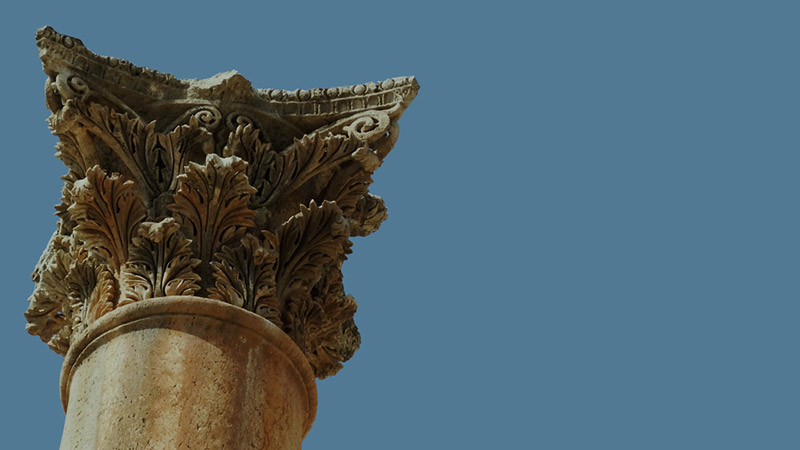More Results
Showing 12 of 54
Articles

Shephelah
ShephelahThe Hebrew Bible mentions the Shephelah several times. This word, meaning "low," is usually translated "lowlands" or "foothills." The term refers to a 12- to 15-mile-wide region in Judea. Though the Israelite...
MORE
Sons of Light
Sons of LightIn Jesus' time, there were four major religious groups (or "philosophies," as Josephus, the Jewish historian of the time, called them). They were the Zealots, the Sadducees, the Pharisees, and the Essenes. It is impossible t...
MOREEncyclopedia

Scenes from Caesarea Philippi: Niches
These niches originally held statues of the pagan gods worshipped at Caesarea Philippi. The largest is actually an artificial cave that leads to a niche in the cliff itself. This niche apparently held a statue of Pan. Above it is another niche wit...
MORE
Synagogue Today
The Synagogue ContinuesThe early Christians continued to attend synagogues, although they had a new interpretation of the Torah since Jesus had been revealed as Messiah (Acts 13:14). The new community of Jesus was born out of the synagogue, and th...
MORE
Synagogues
Imagine Jesus standing on a synagogue platform and unrolling the Torah scrolls. As the community listens, he reads the familiar scriptures and pauses. Everything about the synagogue service has been routine until now, and then Jesus begins his lif...
MORE
The Altar at Megiddo
After reaching the Promised Land, the Israelites were commanded by God to destroy the Canaanite high places (Num. 33:52) so that they would not be tempted to blend worship of the false gods of the land with the worship of Yahweh, the one true God....
MORE
The Cult of Asclepius
Asclepius, the god who healed with moving water, was said to be the son of god Apollo and a woman named Coronis. His symbol was the snake, and he was known as the god of life because the snake seemingly resurrects itself (sheds its skin and is bor...
MORE
The Garden Tomb
Just north of the Damascus Gate, the main northern entrance to Jerusalem, is a beautiful garden located against the side of a rocky cliff. It has been a place of interest to many Christian visitors because it is remarkably similar to the Bible's d...
MORE
The Herod Family Tomb
The Herod Family TombThe tomb to the west of Jerusalem was at one time thought to be the burial place of the Herod family. Later research indicated that it was not Herod's tomb. It is noted for the "rolling stone" still in place next to ...
MORE
The High Place and Altar at Dan
The high place at Dan, in northern Israel, dates to 920 BC, when Israel was divided into the northern (Israel) and the southern (Judah) kingdoms.The high place measured 62 feet square and was surrounded by a wall. On top of the high place were bui...
MORE
The Mount of Olives
The Mount of Olives is 2,650 feet above sea level. The ridge is two miles long. Beyond the Mount of Olives is the Judea Wilderness. The Old Testament predicted that the Messiah would come from the east through the wilderness and would enter Jerusa...
MORE
The Shephelah
Shephelah is a Hebrew word meaning "low" and is usually translated "lowlands" or "foothills." The term refers to a twelve to fifteen-mile wide region in Judea, comprised of foothills that are located between the coast...
MORE

















